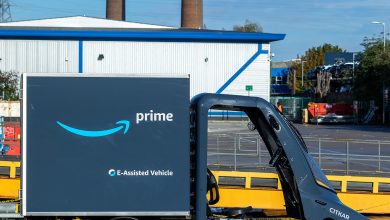
Carbon Management is a process that involves reducing your carbon footprint. There are three main steps in the carbon management process: energy efficiency, onsite renewable energy, and carbon offsets. Energy efficiency is the first step in carbon management, and businesses should use more efficient technologies when possible. Onsite renewables can offset your carbon footprint, and should be used when available. Large businesses and organisations can also use off-site renewables, or renewable energy devices that use renewable energy in place of fossil fuels. Finally, carbon offsets can help reduce your carbon footprint, but should be the last resort. Learn more here.
Carbon Management – What Is It and Why Is It Important For Companies?
Carbon Management is about managing your company’s carbon emissions. This includes understanding how to calculate your company’s carbon footprint. It’s also important to understand how to measure and report your carbon footprint. Let’s take a look at why carbon management is important for companies. First, consider how a product is produced. Raw materials require energy to process, assembly-line workers need fuel to move raw materials, and the product must be shipped. Finally, the product will be used by the consumer. All of this energy-intensive production results in emissions. Unless carbon management technologies are implemented in production, they can’t eliminate these emissions.
Why is carbon management important?
Carbon management focuses on reducing the amount of CO2 emitted by an organisation. It helps companies comply with regulations and realise maximum operational gains by identifying pathways of least resistance to CO2 emissions. Carbon is a major greenhouse gas, and emissions are widespread across many sectors and industries. A key trend in carbon management is carbon footprinting, or the assessment of an organisation’s carbon footprint. This is an important tool for determining where a company’s carbon emissions are generated and where further reductions are needed.
Forests provide an excellent opportunity for carbon storage because they require little management to increase their growth. Depending on the area and climate, soil carbon accumulates at rates ranging from zero to seven tonnes per hectare per year. Those gains are highest in temperate forests and are below zero in tropical and subtropical forests. The average gain is about two tonnes per hectare per year.
Manage your company’s carbon emissions
Managing your company’s carbon emissions is a key part of doing business responsibly. Today, a number of tools and resources are available to help you reduce your carbon footprint and make a positive impact on the environment. One such tool is Net, which allows you to calculate the CO2 tonnage from your operations and categorise it to give you an overall view of your carbon footprint. If you are looking for Carbon management this company will provide you with the best services.
To effectively manage your company’s carbon emissions, you need to consider the entire life cycle of your products and services. This involves identifying all of the steps of your business and reaching out to all your suppliers. A single product may involve multiple subcontractors, multiple components, and multiple manufacturing steps and transportation episodes, each of which contributes to carbon emissions.
How to calculate the carbon footprint of your company
If you are a company and wish to be more eco-conscious, it is important to calculate your carbon footprint. Carbon footprint calculators offer a rough estimation of your business’ carbon footprint within a confidence interval. These estimates can be further refined by using site-specific data. In addition, the carbon footprint calculator can be used to create goals and set objectives.
First, you’ll need to gather data on your company’s activities. This data can range from electricity consumption and waste disposal to travel and fuel consumption. To make the calculation more accurate, consider using a carbon footprint calculator that is specialized for businesses. This way, you can be sure that it is tailored to your business model.
What is the carbon footprint?
Your carbon footprint is the amount of greenhouse gases you produce. It is measured as a carbon dioxide equivalent. Whether you are buying food, producing energy, or building a house, your carbon footprint is an important way to measure your environmental impact. The more carbon dioxide you produce, the greater your carbon footprint.
The carbon footprint measures all of the emissions of greenhouse gases resulting from human activity. These include carbon dioxide, methane, nitrous oxide, and fluorinated gases. These gases trap heat in the atmosphere and cause global warming. These emissions take thousands of years to leave the atmosphere. As you can see, there are many ways to reduce your carbon footprint.
The main influences on carbon footprints are population, energy use, and the carbon intensity of the economy. Worldwide, electricity is responsible for approximately 37% of CO2 emissions. While the amount of coal used for electricity has decreased dramatically in recent years, fossil fuels still dominate the energy industry. Alternative energies such as solar and wind power are also available to reduce carbon footprints.
Carbon Accounting and Management Platform FigBytes
FigBytes has been used to track over 20 million tonnes of carbon emissions on behalf of its customers. It automates data capture and calculations so customers can report their emissions against climate commitments and frameworks. Learn more about Greenly’s climate package. And see how much it costs.
Automatic data collection
With growing pressure from consumers and investors to reduce carbon emissions, organisations are beginning to turn to carbon accounting software. Carbon accounting software helps companies automate data collection and calculations for climate reporting. Whether you’re calculating your company’s carbon footprint or preparing your annual sustainability report, carbon accounting software can help.
While there are many carbon emissions management platforms on the market, some are better suited to your business. For instance, Persefoni is a US-based vendor built to uphold the highest standards of transparency and accountability. It is a five-star vendor with numerous features, and is an excellent choice for multinational corporations and asset managers. The company’s comprehensive suite of features helps you meet climate disclosure requirements.
Carbon accounting software allows companies to monitor their carbon footprint, analyse their energy consumption, and even manage their carbon emissions. With the right platform, businesses can minimise their emissions and offset their costs. For example, switching from oil to gas heating could reduce energy costs and emissions for an office building that generates a large amount of heat.
Emissions are everyone’s business
By tracking their emissions, companies can prepare systematically for the challenges of climate change and the need to reduce emissions. Companies that fail to do this risk losing their competitive advantage. Many companies are already experimenting with hydrogen-powered vehicles. Industry produces about a fifth of all greenhouse gas emissions, including iron and steel, cement, aluminium, and other industrial products. Fortunately, collaboration among industries can lower emissions. Several companies have set ambitious emission reduction targets.
Emissions reporting can be challenging and requires a lot of work. While it is voluntary, it can expose companies to substantial liabilities. One of the most widely used reporting frameworks is developed by the Global Reporting Initiative. The initiative was established in Amsterdam and developed the world’s most comprehensive set of reporting principles, guidance, and standard disclosures.



